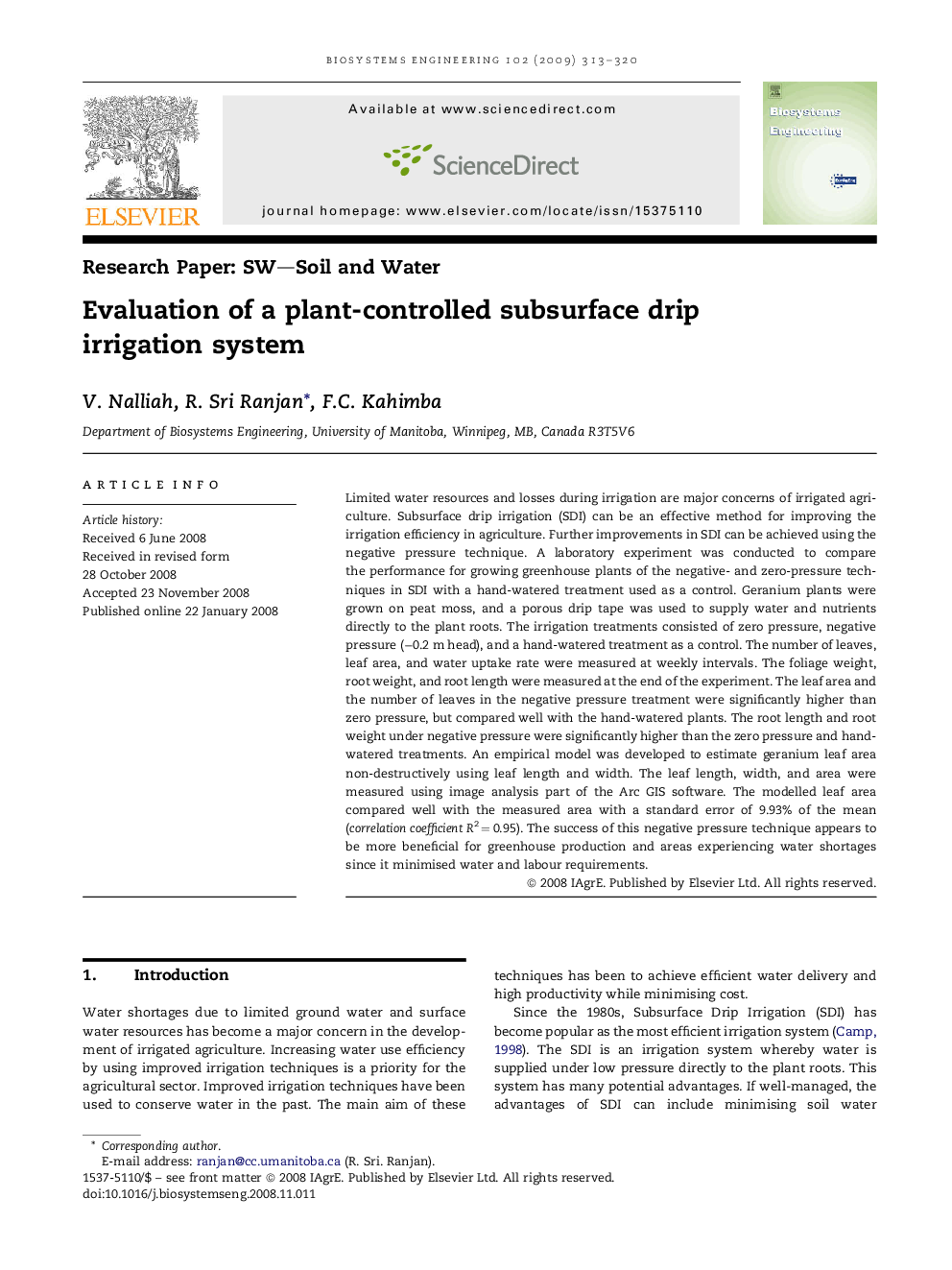| Article ID | Journal | Published Year | Pages | File Type |
|---|---|---|---|---|
| 1712140 | Biosystems Engineering | 2009 | 8 Pages |
Limited water resources and losses during irrigation are major concerns of irrigated agriculture. Subsurface drip irrigation (SDI) can be an effective method for improving the irrigation efficiency in agriculture. Further improvements in SDI can be achieved using the negative pressure technique. A laboratory experiment was conducted to compare the performance for growing greenhouse plants of the negative- and zero-pressure techniques in SDI with a hand-watered treatment used as a control. Geranium plants were grown on peat moss, and a porous drip tape was used to supply water and nutrients directly to the plant roots. The irrigation treatments consisted of zero pressure, negative pressure (−0.2 m head), and a hand-watered treatment as a control. The number of leaves, leaf area, and water uptake rate were measured at weekly intervals. The foliage weight, root weight, and root length were measured at the end of the experiment. The leaf area and the number of leaves in the negative pressure treatment were significantly higher than zero pressure, but compared well with the hand-watered plants. The root length and root weight under negative pressure were significantly higher than the zero pressure and hand-watered treatments. An empirical model was developed to estimate geranium leaf area non-destructively using leaf length and width. The leaf length, width, and area were measured using image analysis part of the Arc GIS software. The modelled leaf area compared well with the measured area with a standard error of 9.93% of the mean (correlation coefficient R2 = 0.95). The success of this negative pressure technique appears to be more beneficial for greenhouse production and areas experiencing water shortages since it minimised water and labour requirements.
